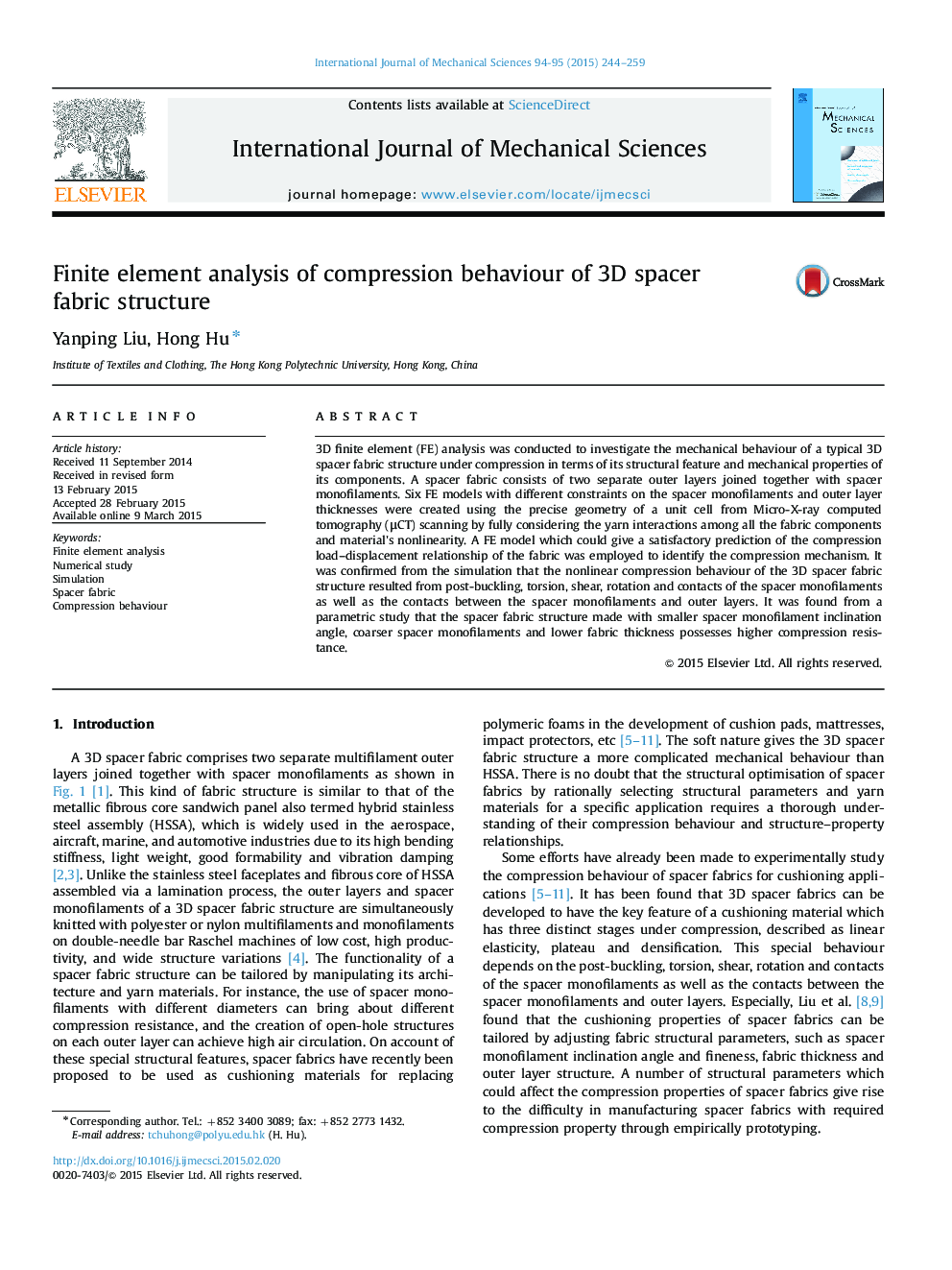| Article ID | Journal | Published Year | Pages | File Type |
|---|---|---|---|---|
| 782184 | International Journal of Mechanical Sciences | 2015 | 16 Pages |
•The finite element models are built using μCT reconstruction of the spacer fabric.•All the yarn interactions and material׳s nonlinearity are considered.•The detailed compression mechanism of the spacer fabric is identified.•A good prediction on the compression load–displacement relationship is obtained.•The effect of spacer monofilament architecture is parametrically investigated.
3D finite element (FE) analysis was conducted to investigate the mechanical behaviour of a typical 3D spacer fabric structure under compression in terms of its structural feature and mechanical properties of its components. A spacer fabric consists of two separate outer layers joined together with spacer monofilaments. Six FE models with different constraints on the spacer monofilaments and outer layer thicknesses were created using the precise geometry of a unit cell from Micro-X-ray computed tomography (μCT) scanning by fully considering the yarn interactions among all the fabric components and material׳s nonlinearity. A FE model which could give a satisfactory prediction of the compression load–displacement relationship of the fabric was employed to identify the compression mechanism. It was confirmed from the simulation that the nonlinear compression behaviour of the 3D spacer fabric structure resulted from post-buckling, torsion, shear, rotation and contacts of the spacer monofilaments as well as the contacts between the spacer monofilaments and outer layers. It was found from a parametric study that the spacer fabric structure made with smaller spacer monofilament inclination angle, coarser spacer monofilaments and lower fabric thickness possesses higher compression resistance.
Graphical abstractFigure optionsDownload full-size imageDownload as PowerPoint slide
